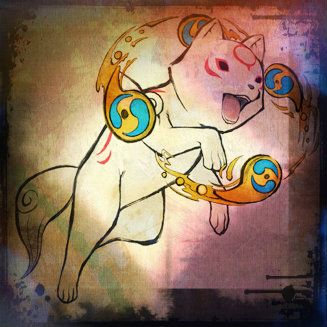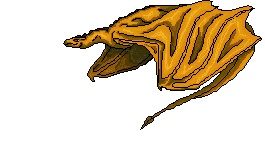|
|
Dragons
Jan 15, 2012 22:14:34 GMT -4
Post by Wish on Jan 15, 2012 22:14:34 GMT -4
Anatomy:
Pernese dragons are four legged, two winged, equine-like creatures with smooth, scaleless hides, and long bodies. Their forelegs are shorter than their hind legs, making their forequarters far lower than their hindquarters. This gives them a bunny like hop when walking, though it allows them to push off powerfully into flight with the strong muscles in their back legs. Each dragon has multifaceted eyes which change color depending upon the dragon's mood, and strong, ripping teeth that allow them to eat nearly any sort of meat. A single pair of headknobs at the back of their head allow them to use their psychic abilities, including speaking to their riders or one another, and if damaged can result in a loss of these functions.
Lifestyle:
Dragons start out as dragonets, hatching from eggs upon the sands where they are guarded jealously by their mothers, and bond swiftly to human partners who match them mentally. They then spend the next two turns of their life as weyrlings, studying the various skills that will allow them to participate in battle and threadfall, as well as basic survival, healing, and fighting skills. Upon graduation, they join the Weyr's wings, where they serve out their lives until they become either too injured or too old to fight any longer.
Mating/Clutching:
All females are capable of making Mating Flights, though only three colours are capable of clutching regularly. They generally begin to sleep heavily up to a week before they are about to Fly, and start influencing their rider shortly after. Upon taking Flight, their hides begin to glow with an inner luminosity, which lasts throughout, and instinctively search for blood and food. The rider needs to make sure his or her female takes blood only, however, as the meat weighs the dragon down too much, and a short, low flight can prove dangerous for the mating dragons. After blooding a kill, the female then proceeds to Fly, where males will Chase after her, the winner being chosen by the female after the longest period of time she can make it. It is highly dangerous for Flying females to be around one another, as their natural aggression and possessiveness turns them feral, especially clutching females like Sub-Queens and Queens, who can, and will, kill. However, smaller fighting females have been known to double up while flying.
In terms of clutching, the following ballad composed and sung by Harpers helps to remind riders the amount of time it takes for a clutch to be had.
"Rise in glory,
Bronze and gold.
Dive entwined,
Enhance the Hold.
Count three months and more,
And five heated weeks,
A day of glory and
In a month, who seeks?
A strand of silver
In the sky...
With heat, all quickens
And all times fly."
In other words, after a flight, it takes approximately thirteen weeks to prepare the eggs for clutching. Then, once they are clutched, it takes about five weeks for them to harden enough to hatch. At Trelis, time in the real world compared to the world of Pern is about one month to one season. There are about twelve months, though not as long, in pern. That means three each season. A Queen that flies in the beginning of Winter, will be carrying eggs the rest of winter, and clutch in Spring. Then, a third of the way into spring, they will hatch. This is what it realistically would be, so we try to keep it as close to this time frame as possible.
Eye colors:
blue/green = contentment or happiness
yellow = fear or alert
orange/red = anger
red = hunger
white = danger
gray = pain
purple = love/mating lust [/blockquote] |
|


